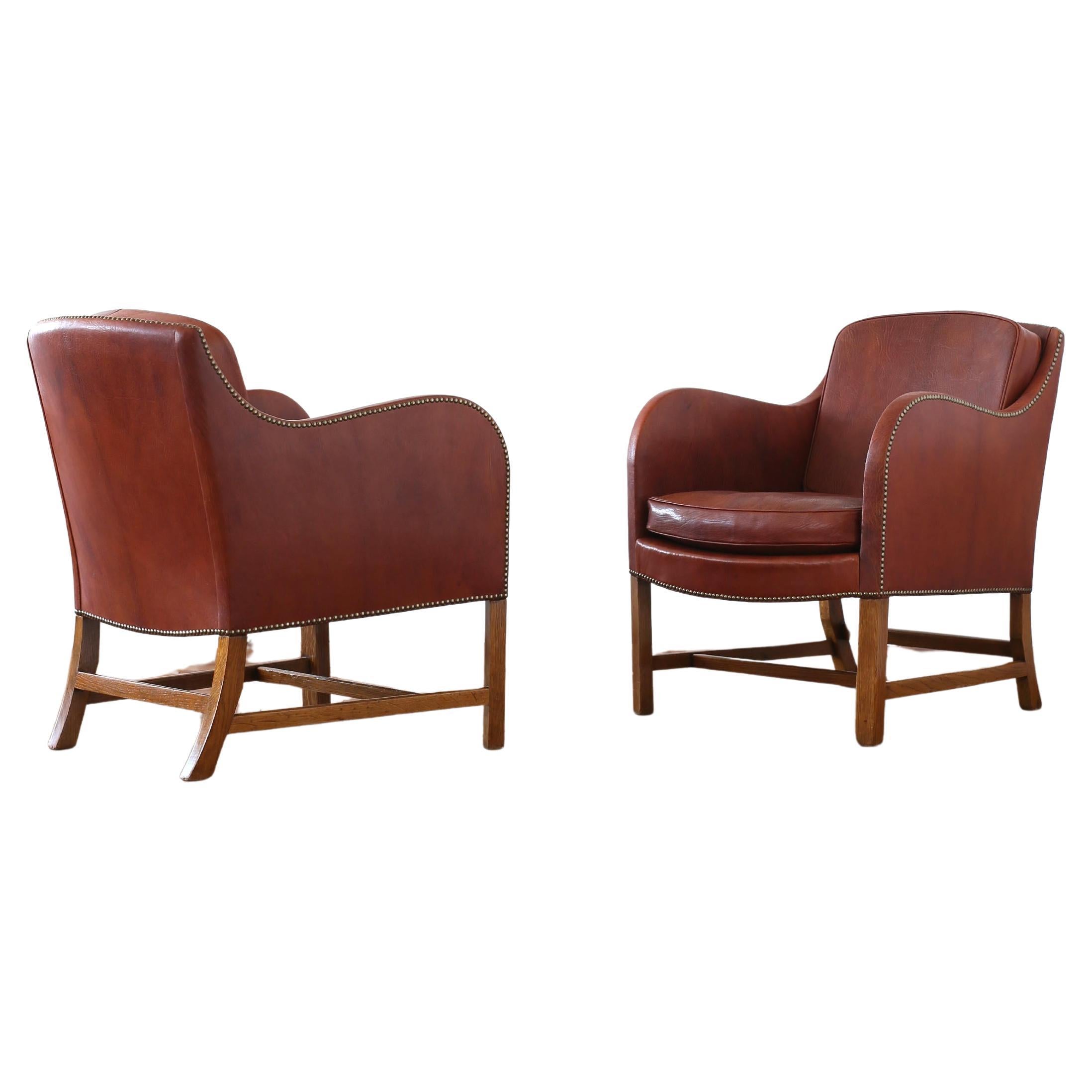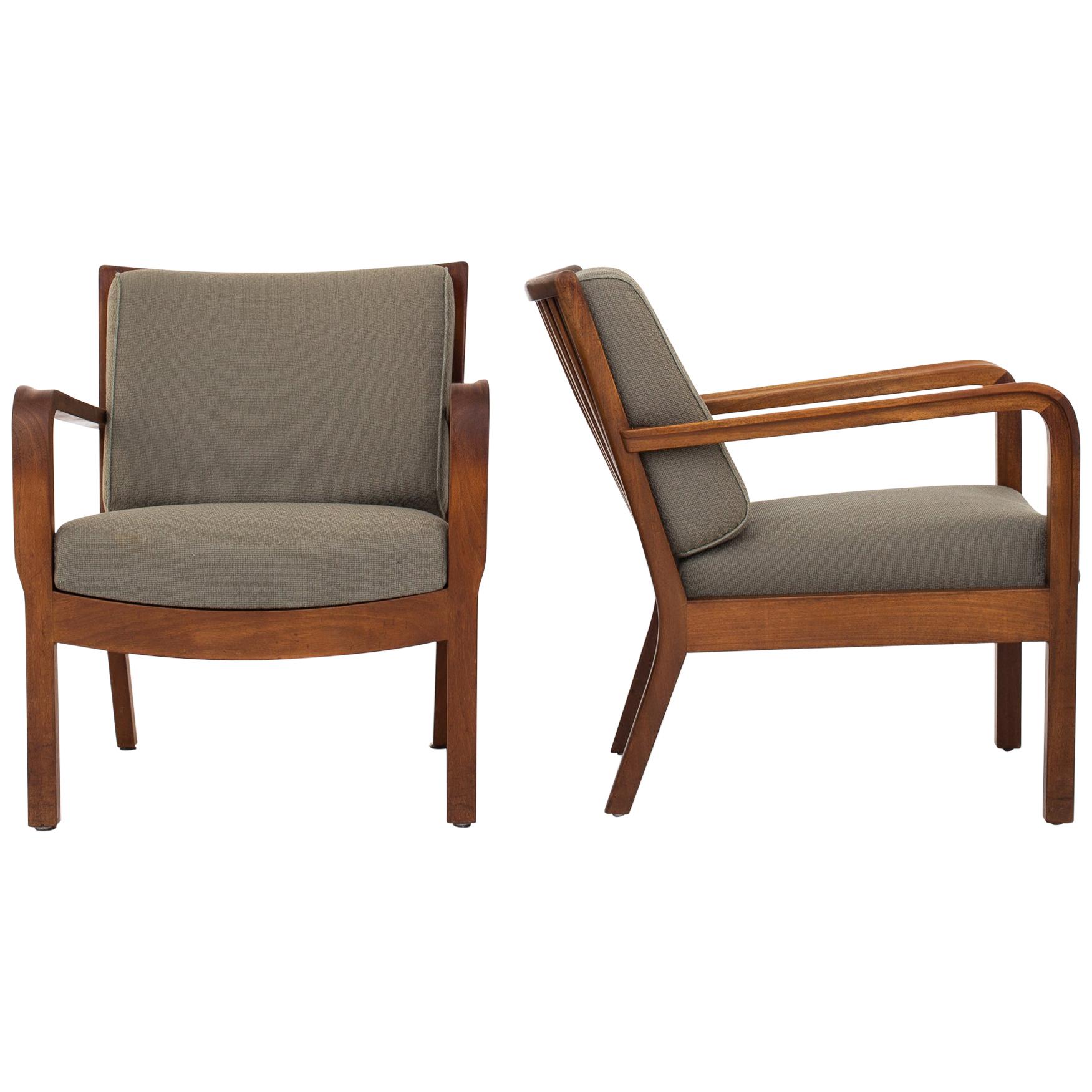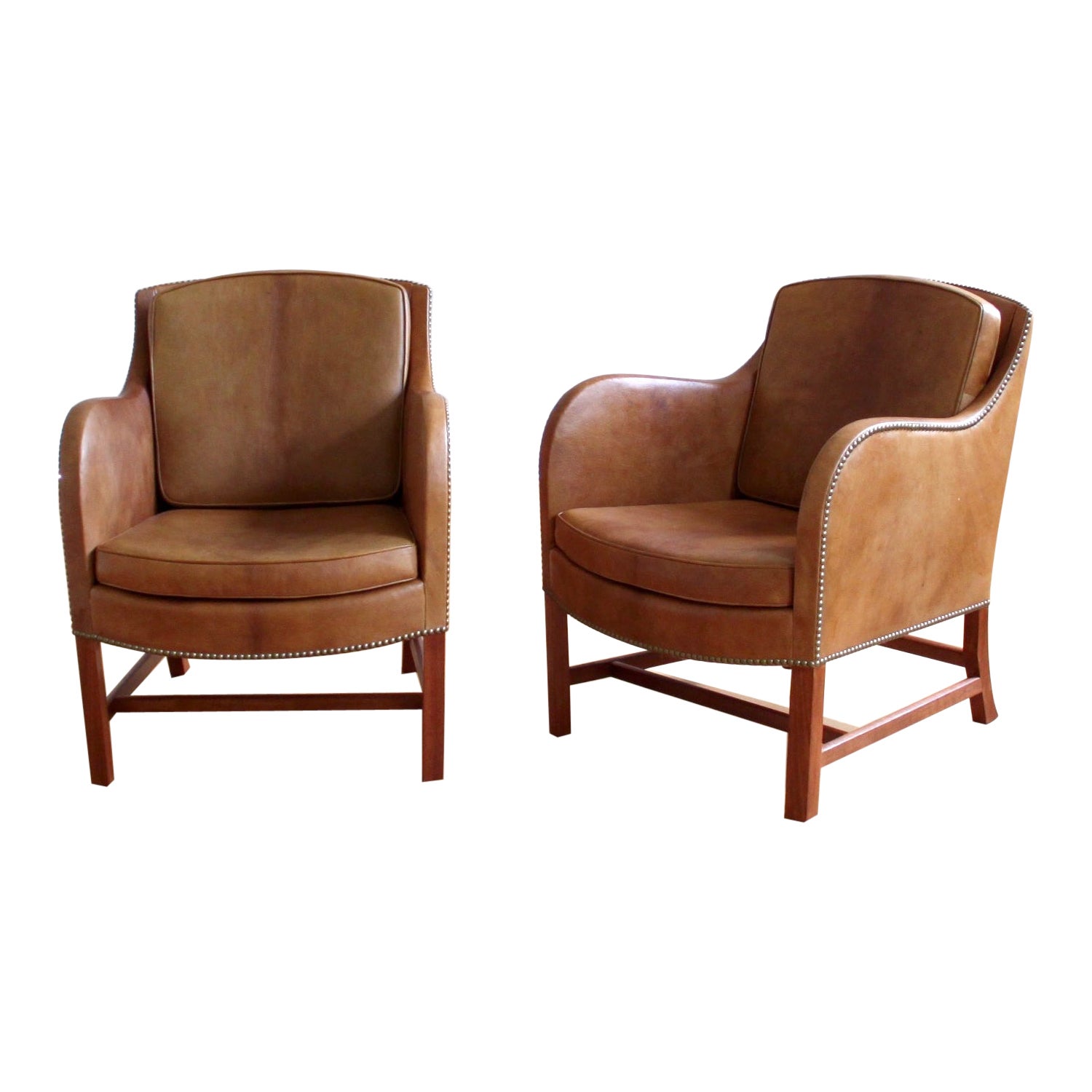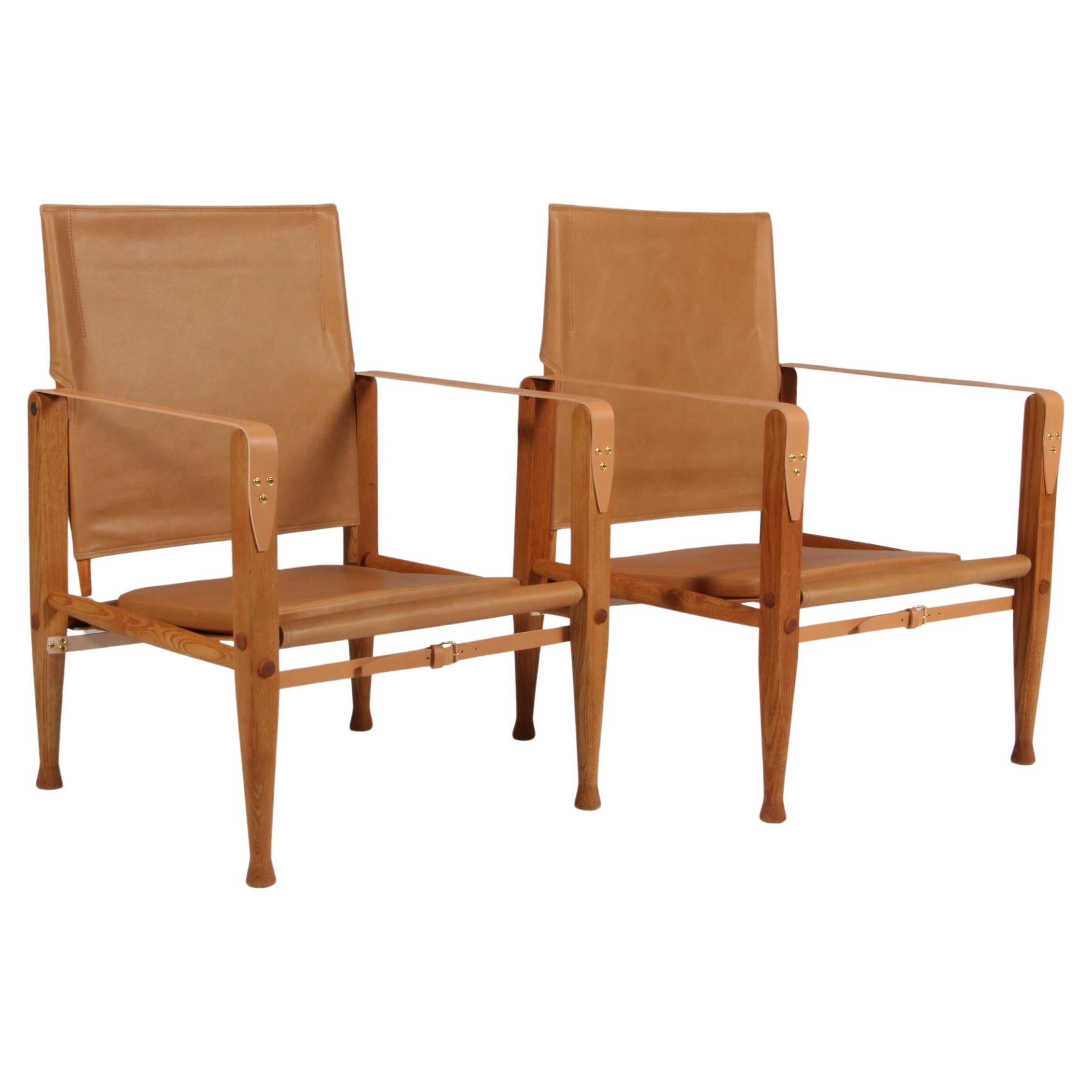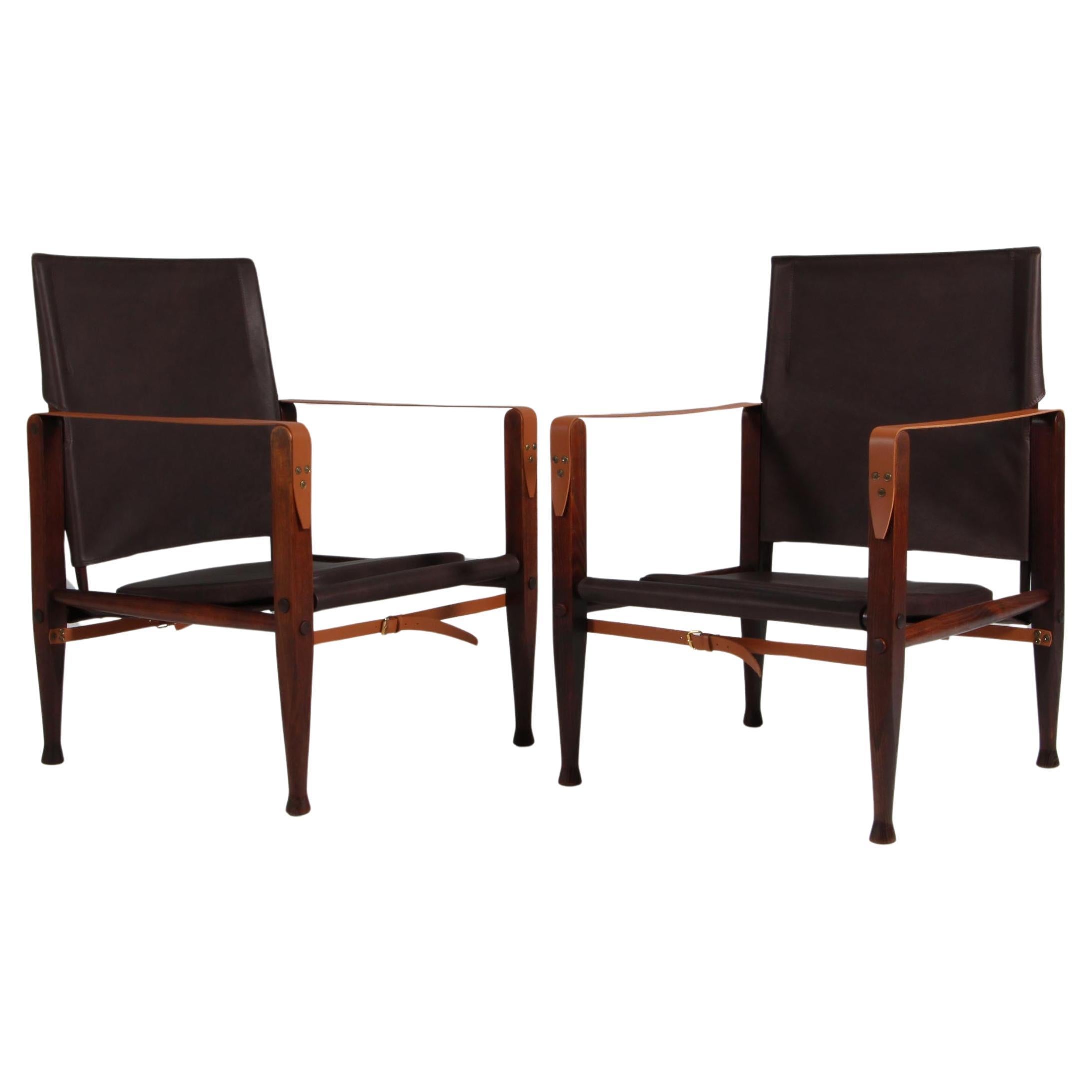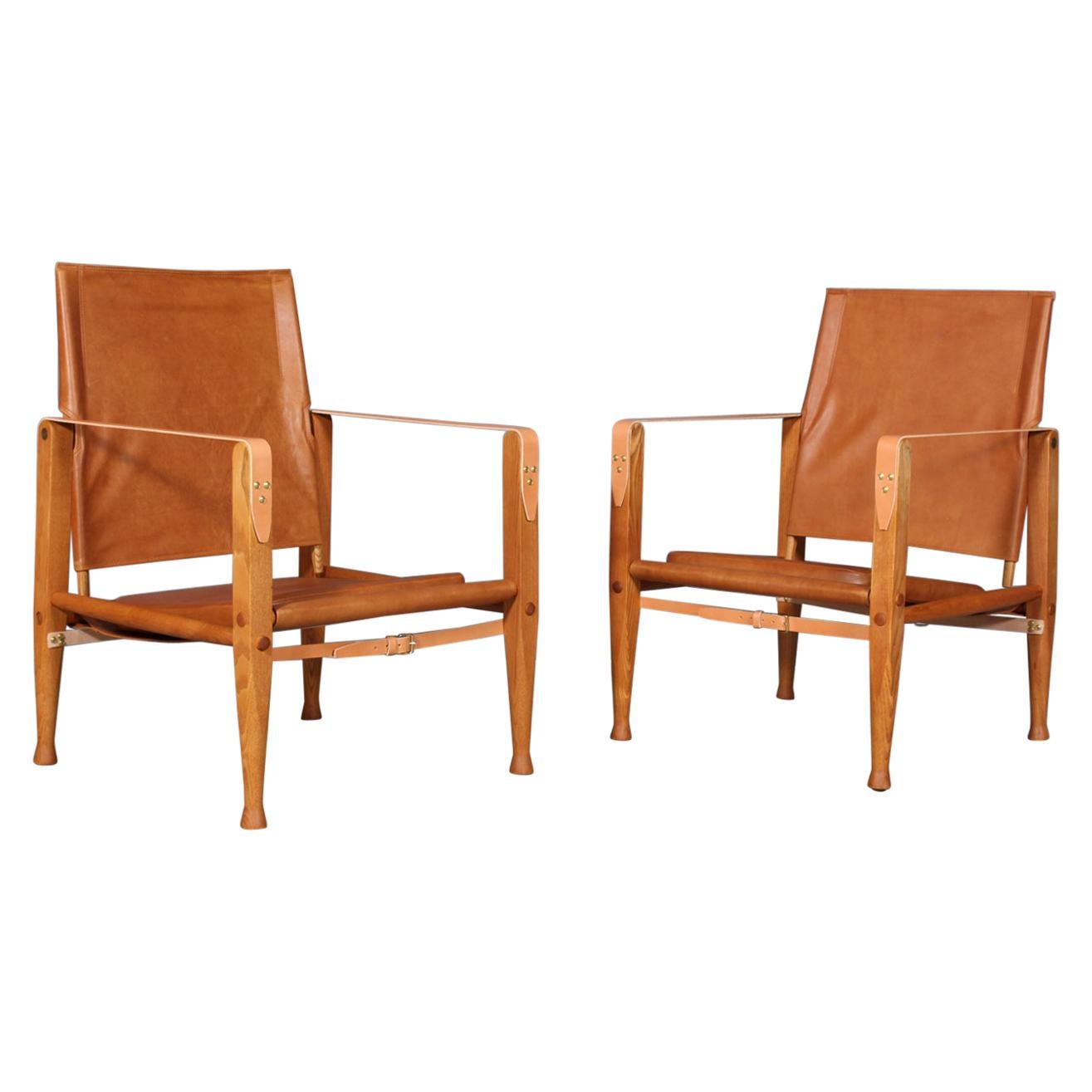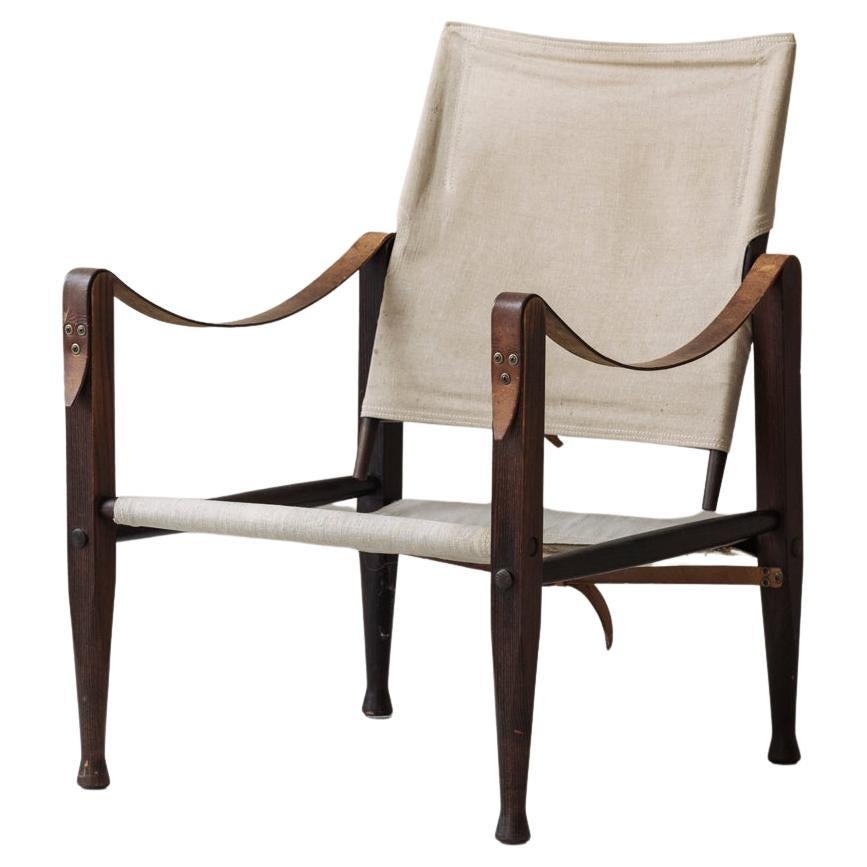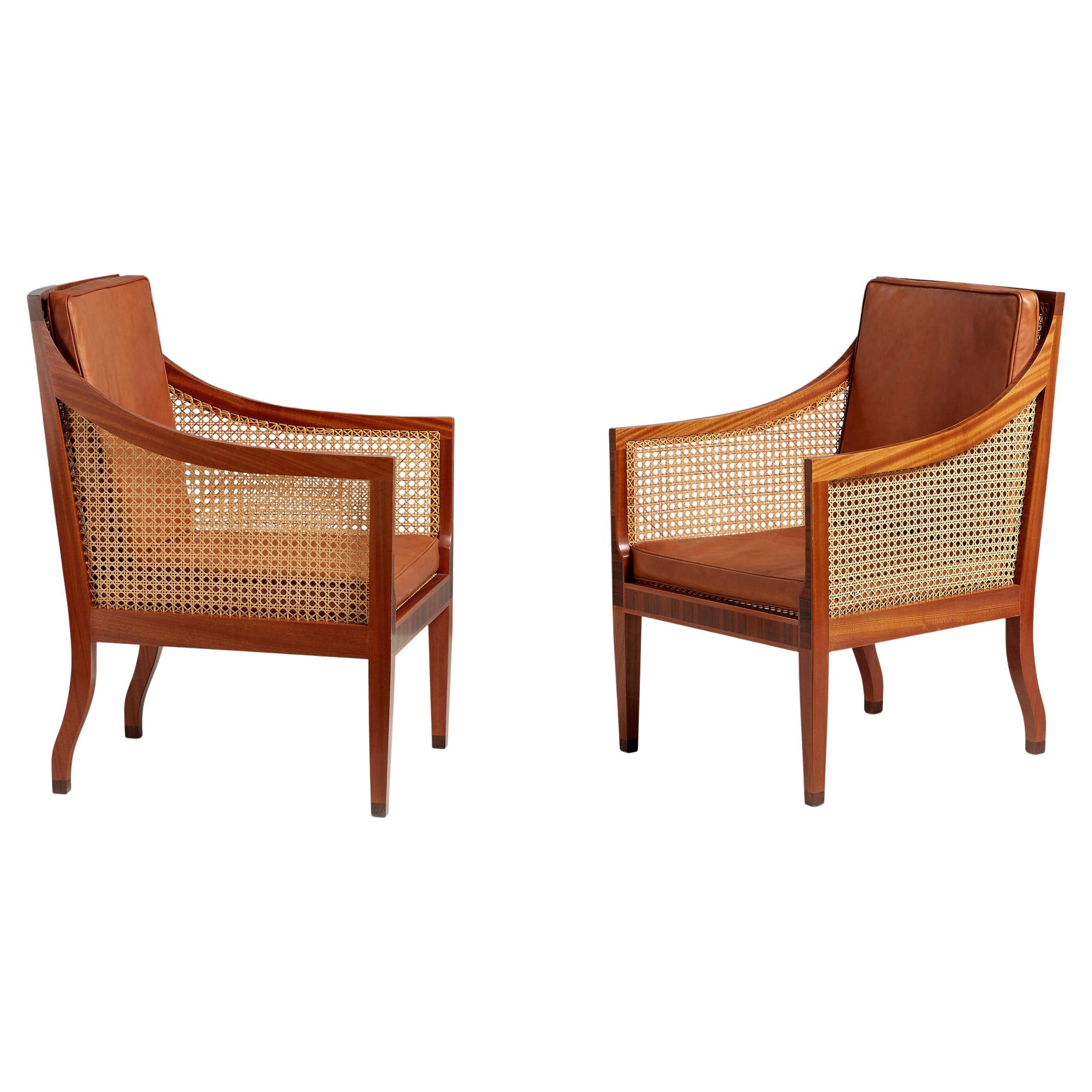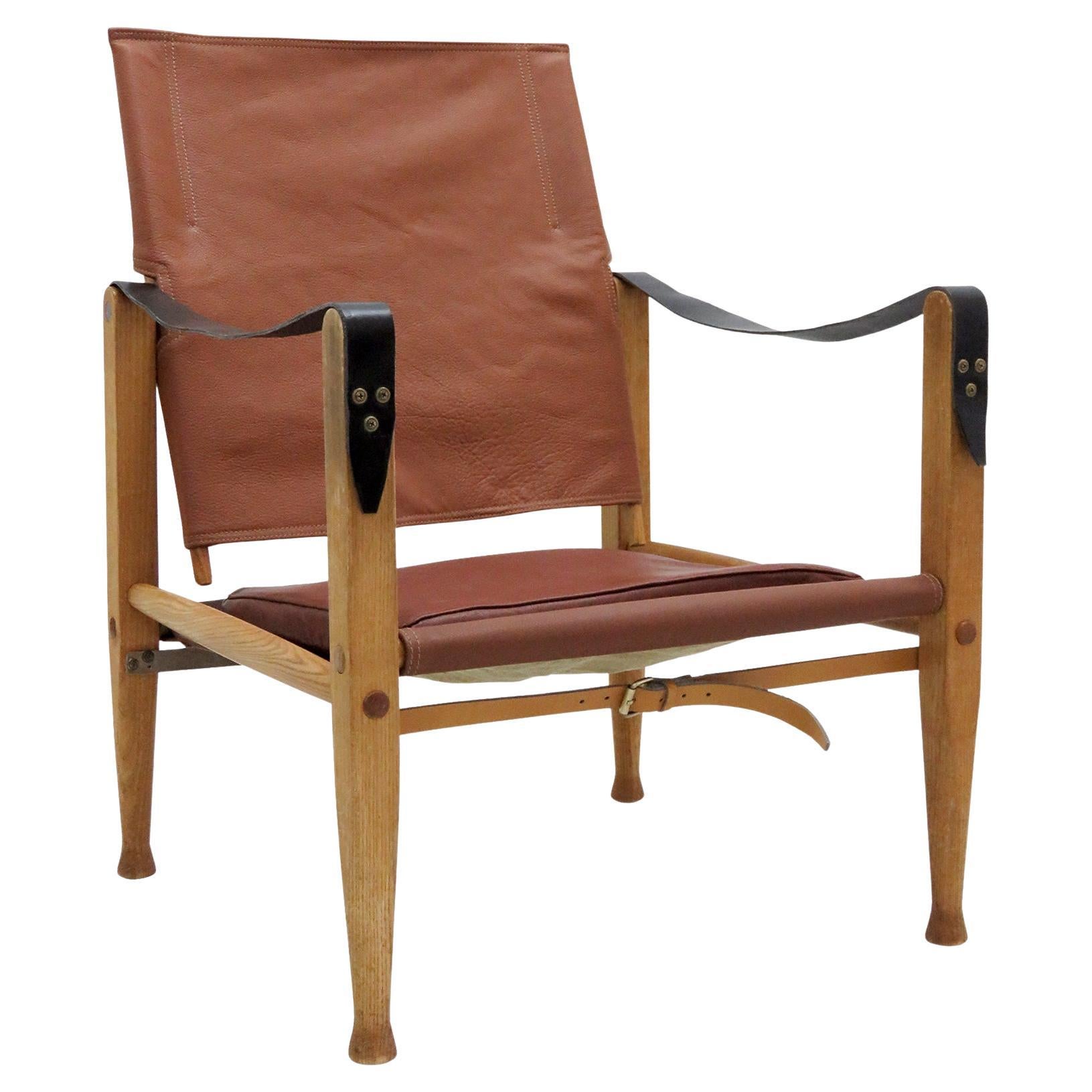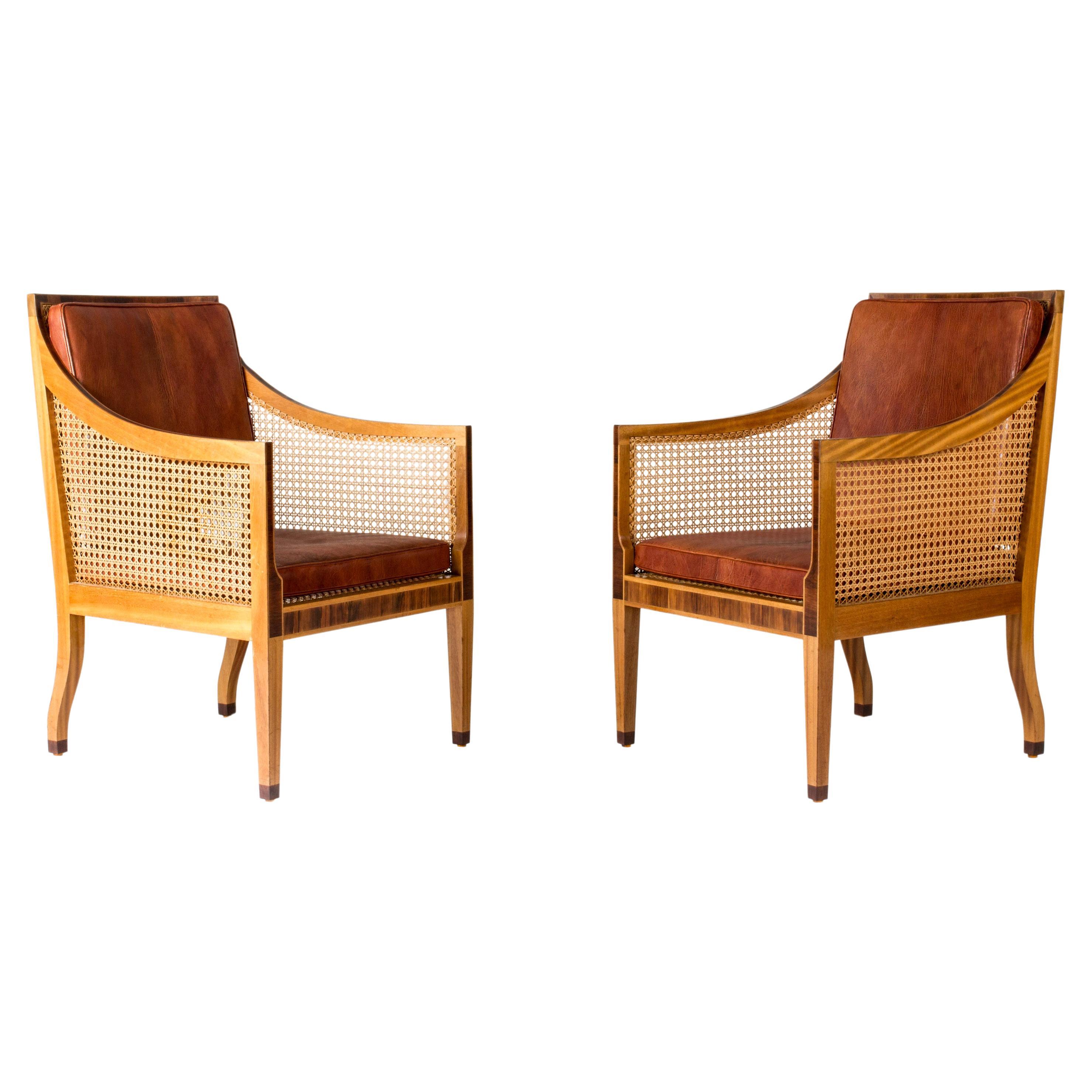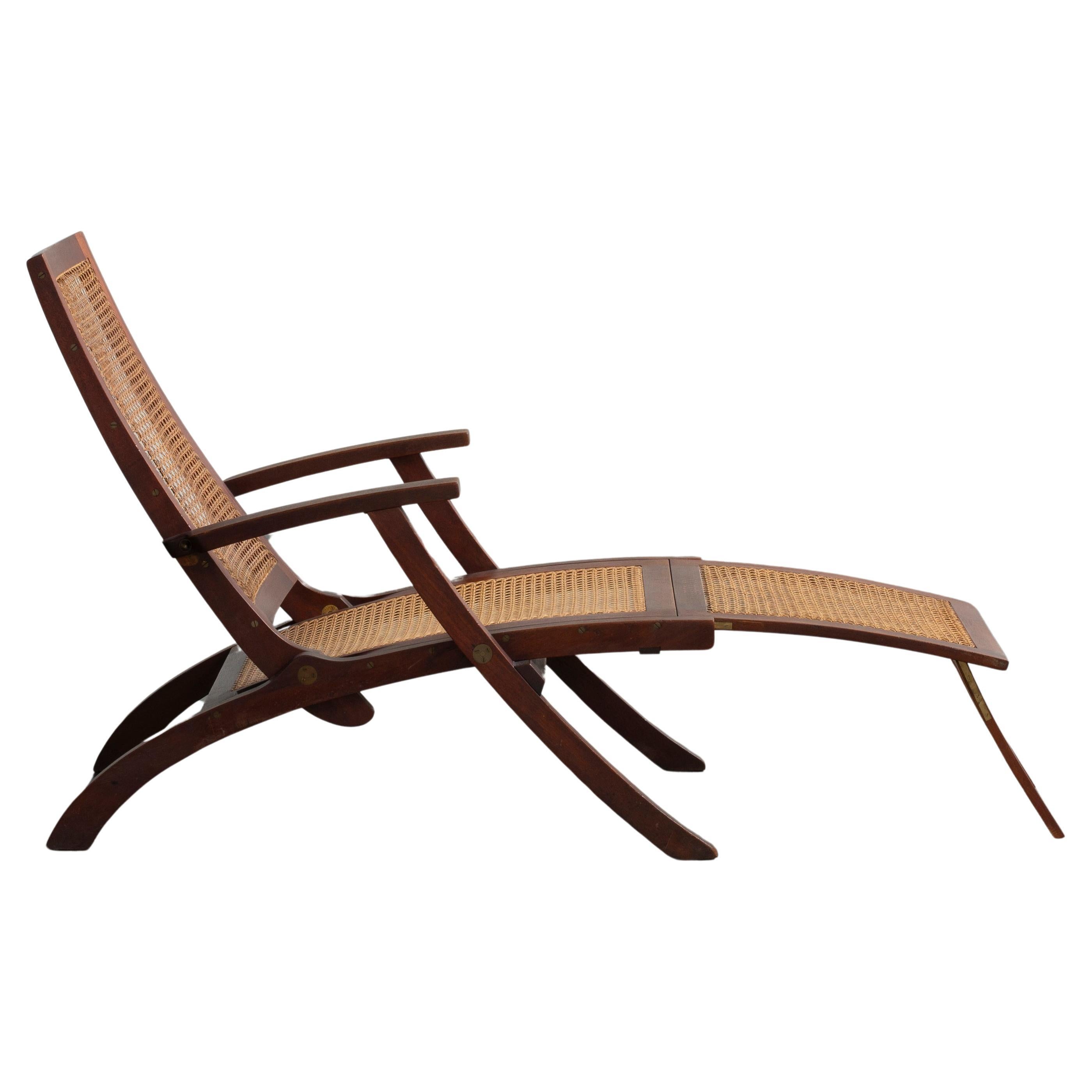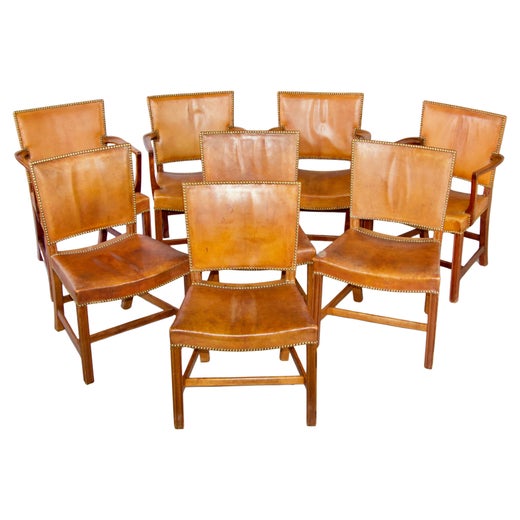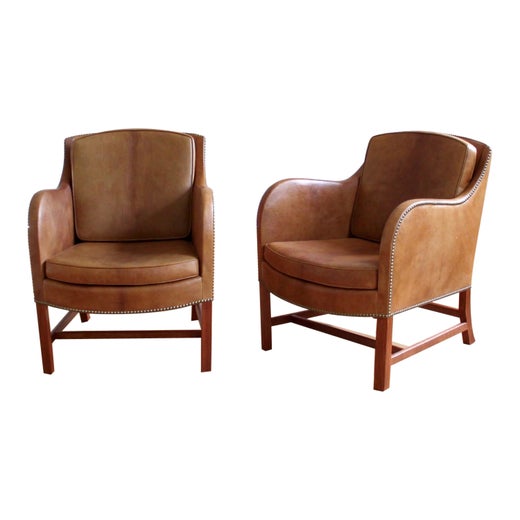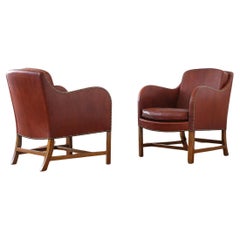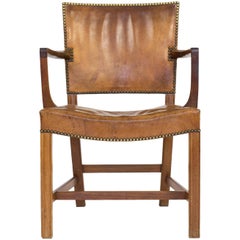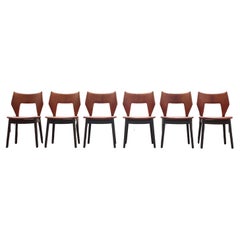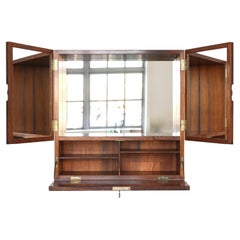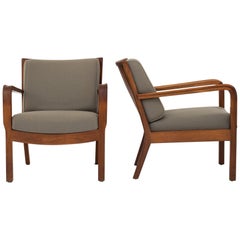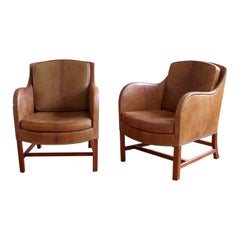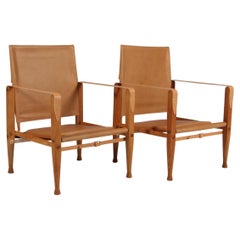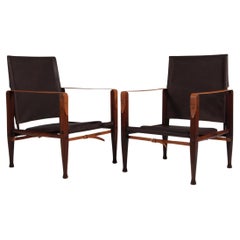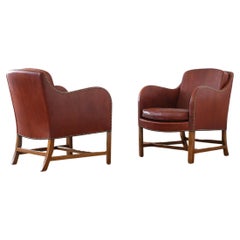
A pair of Kaare Klint and Edvard Kindt-Larsen 'Mix' easy chairs, 1930
View Similar Items
A pair of Kaare Klint and Edvard Kindt-Larsen 'Mix' easy chairs, 1930
About the Item
- Creator:
- Dimensions:Height: 30.71 in (78 cm)Width: 25.99 in (66 cm)Depth: 32.29 in (82 cm)Seat Height: 16.15 in (41 cm)
- Sold As:Set of 2
- Style:Scandinavian Modern (Of the Period)
- Materials and Techniques:
- Place of Origin:
- Period:
- Date of Manufacture:1940's
- Condition:Reupholstered. Wear consistent with age and use.
- Seller Location:Copenhagen, DK
- Reference Number:1stDibs: LU1008240416502
Kaare Klint
Architect, teacher and furniture designer Kaare Klint is among the most important figures in Scandinavian modernism. Widely recognized as the father of modern Danish furniture, Klint sought to pay homage to historical furniture styles and prized functionality as essential to designing for modern living. He established the design school at Copenhagen’s Royal Danish Academy of Fine Arts, and his students became mid-century legends of cabinetry and furniture-making.
Klint prioritized functionalism and drew on an array of influences in his own work. Furniture experts will observe the influence of 18th-century English seating in his Red chair, while Klint’s iconic Safari chair had roots in campaign furniture. The other exemplary chairs, sofas and tables for which he is known bear the mark of Thomas Chippendale and Biedermeier furniture as well as Greek and Roman forms.
Klint's father was Peder Vilhelm Jensen-Klint, a formidable architect of his day. The younger Klint initially followed in his father’s footsteps, studying under him as well as distinguished architect Carl Petersen. Alongside Danish architect Ivar Bentsen, he headed the renovation of the Designmuseum Denmark in Copenhagen from 1920–26 (Klint also furnished the institution as part of the project). Around the same time, Klint helped found the furniture design school at the Royal Danish Academy. The impact of his role as an instructor there cannot be overstated — he mentored such esteemed cabinetmakers and furniture designers as Børge Mogensen, Hans Wegner and Ole Wanscher.
A prominent advocate of ergonomics, Klint valued comfort and functionality over style. Painstaking research went into each piece of sophisticated yet wholly unadorned furniture he designed, as he endeavored to build structures that took into consideration human proportions and scale. And like the Shakers, Klint believed that quality craftsmanship and good materials were integral to the design of durable furniture that was free of embellishment.
The humble grace of Klint’s style characterizes legendary seating designs that continue to charm today’s legions of mid-century modern enthusiasts. His Safari chair, Faaborg chair, Ravenna armchair and Propeller stool — as well as most of the seating created by Danish modernists generally — have warmed interiors and influenced furniture designers all over the world.
Find vintage Kaare Klint furniture and other Scandinavian modern furniture on 1stDibs.
Edvard Kindt-Larsen
Danish architect Edvard Kindt-Larsen is one half of the Kindt-Larsen design powerhouse, alongside his wife, Tove Kindt-Larsen (1906–94). Together, they helped usher in the golden era of Scandinavian modern furniture design through their significant involvement with the Cabinetmakers’ Guild Exhibitions from the 1930s through the ’70s.
Married in 1937, Tove and Edvard etched out names for themselves independently and as a pair. Tove was one of the first female designers to come to the fore during Denmark’s rise in furniture production. She studied under the legendary Kaare Klint at the Department of Furniture Design at the Royal Danish Academy of Fine Arts years after she started working in the industry.
Edvard received great recognition for his large hotel project by the lakes in Copenhagen and his house in Klampenborg, which he designed in 1962. Edvard was awarded the Eckersberg Medal from the Royal Danish Academy of Fine Arts in 1949 for his work as an architect.
While both were skilled designers — the couple’s coffee tables, armchairs and other pieces are widely collected today — Edvard and Tove’s greatest contribution is undoubtedly their involvement with the Cabinetmakers’ Guild Exhibitions.
The shows they assembled were integral to putting Danish design on the map, with Edvard serving as head of the exhibitions from 1943 to ’66. During this period, mid-century Danish design truly took off in the United States — when Scandinavia’s simple, curvilinear wooden furniture, home goods and textiles suddenly seemed the perfect foil for glass-and-steel skyscrapers.
Together, the pair organized events that ignited collaborations between big-name Danish designers such as Hans J. Wegner and Johannes Hansen, Finn Juhl and Niels Vodder, Ole Wanscher and A.J. Iversen, Jacob Kjær and Peder Moos, and more.
The guild provided a platform for the designers to showcase their now-iconic works, including Wegner’s Round chair, the rustic and recognizable Hunting chair and Spanish chair — both created by Børge Mogensen — and Finn Juhl’s Chieftain chair, 46 chair and 46 sofa.
On 1stDibs, find antique Edvard Kindt-Larsen seating, tables and case pieces.
More From This Seller
View AllVintage 1930s Danish Scandinavian Modern Lounge Chairs
Brass
Vintage 1930s Danish Scandinavian Modern Armchairs
Leather, Mahogany
Vintage 1960s Danish Scandinavian Modern Armchairs
Leather, Rosewood
Mid-20th Century Danish Scandinavian Modern Cabinets
Brass
Vintage 1940s Danish Scandinavian Modern Lounge Chairs
Fabric, Cane, Rattan
Mid-20th Century Danish Scandinavian Modern Lounge Chairs
Steel
You May Also Like
Mid-20th Century Danish Scandinavian Modern Lounge Chairs
Mahogany
Mid-20th Century Danish Scandinavian Modern Armchairs
Leather, Mahogany
Vintage 1960s Danish Scandinavian Modern Lounge Chairs
Leather, Ash
Vintage 1960s Danish Scandinavian Modern Lounge Chairs
Leather, Ash
Vintage 1960s Danish Scandinavian Modern Lounge Chairs
Leather, Ash
Vintage 1950s Danish Scandinavian Modern Living Room Sets
Canvas, Oak
